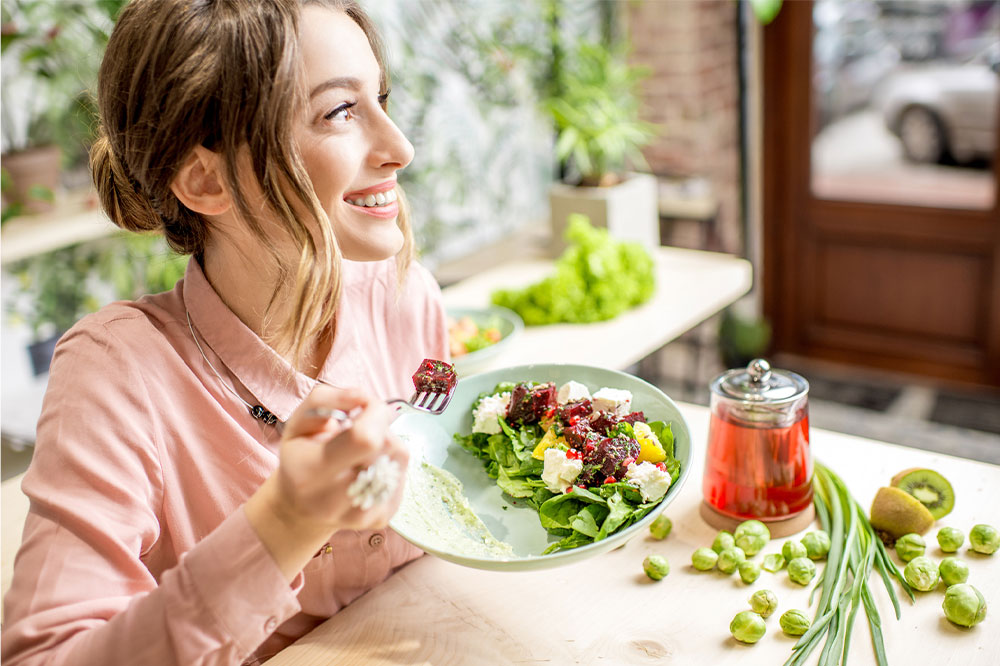7 helpful tips to lead a happier life

Happiness is a state of mind that can be cultivated through conscious effort and self-awareness. Certain factors are known to contribute significantly to one’s overall well-being and to bring a sense of joy, purpose, and satisfaction. Some of these factors give relatively quicker results, while others may need constant practice and patience. A few such proven keys to happiness are listed below. Practicing these can empower one to proactively nurture and experience fulfillment.
Accept strengths and weaknesses
Self-acceptance involves acknowledging strengths and vulnerabilities while promoting a positive attitude toward oneself. Studies have shown that self-acceptance is crucial in lowering psychological issues and improving overall well-being. It also involves realizing that one will experience moments of joy and success but also sorrow and failures and embracing both without judgment or resistance. In addition, living in alignment with one’s values, passions, and beliefs creates a sense of inner harmony and reduces the need for external validation.
Practice self-care habits
Practicing self-care habits can help reduce stress, increase creativity, promote a sense of calm, and be a therapeutic way to process one’s emotions. Some common self-care habits can include-
- Setting boundaries and saying no to activities or commitments that reduce one’s energy or cause excessive stress
- Taking time to reflect, recharge, and reconnect with self
- Taking time for leisure activities, hobbies, or simply doing nothing to unwind and recharge
- Spending time in nature
- Journaling one’s thoughts and feelings
Invest in physical well-being
Physical well-being encompasses practices that contribute to a healthy and balanced body and bring happiness. Some of them include-
- Quality sleep – Getting enough sleep helps one manage emotions better. Doctors advise adults to sleep for about 7 to 9 hours daily. Sleep quality also impacts one’s overall mood. Having a light dinner, avoiding caffeine in the evening, and not waking up to harsh alarms are some ways to improve sleep quality.
- Limiting screen exposure – Studies have linked excessive screen time to physical and emotional problems among people. Experts advise stopping using smartphones or other devices 30 minutes before bed.
- Hydration – Dehydration can affect one’s emotional well-being and productivity. It is known to affect the brain’s serotonin production and trigger parts of the brain that trigger anxiety. So it’s important to drink lots of fluids to maintain one’s hydration levels.
- Eating healthy foods – Eating junk food can negatively affect one’s physical and mental health. When the brain doesn’t receive proper nutrition, it cannot release feel-good chemicals and hormones, affecting one’s happiness levels. Therefore, it’s important to include plenty of fruits, vegetables, whole grains, unprocessed protein, and healthy fats in one’s meal plan. Some superfoods like blueberries, dark chocolate, apples, and green tea are known to evoke positive emotions.
- Exercising – Regular physical activity has been scientifically proven to release brain chemicals like dopamine, endocannabinoid, adrenaline, and endorphins. These are all mood-stabilizing chemicals associated with feelings of pleasure and reward and improved emotional well-being. They also help reduce cortisol levels and act as natural stress relievers. In addition, exercising also increases energy levels and improves sleep patterns, leaving one feeling refreshed and rejuvenated. One can practice any physical exercise as per one’s preference for at least 30 minutes per day, including cycling, jogging, running, skipping, swimming, aerobics, dancing, strength training, yoga, boxing, or simply walking.
Keep learning new things
Pursuing self-improvement opportunities that expand one’s knowledge has short-term and long-term benefits. Initially, these activities bring enjoyment and help people satisfy their curiosity. In the long run, they bring a sense of fulfillment and competence and boost confidence for having developed a new skill. It also generates new neural connections that delay brain aging and improve cerebral capabilities.
Support others through acts of service
Acts of service trigger the release of neurotransmitters like dopamine and endorphins in the brain. When individuals engage in helping, volunteering, or offering emotional, financial, or any other form of support to others, they experience a sense of fulfillment and purpose. Additionally, acts of service also strengthen social connections and foster a sense of belonging.
Practice gratitude and foster connections
Practicing gratitude in daily life helps individuals to focus on what one has instead of what one lacks, which is important in developing the feeling of happiness. Similarly, nurturing meaningful relationships, spending time with loved ones, connecting with nature, people, and animals, and seeking social support when facing challenges can bring happiness.
Maintain a positive mindset
Cultivating a positive mindset involves consciously choosing optimism over pessimism. When faced with difficulties, considering challenges as opportunities for growth can boost resilience and facilitate happiness. One can surround themselves with positive influences, such as uplifting individuals and inspiring content to promote happiness.



